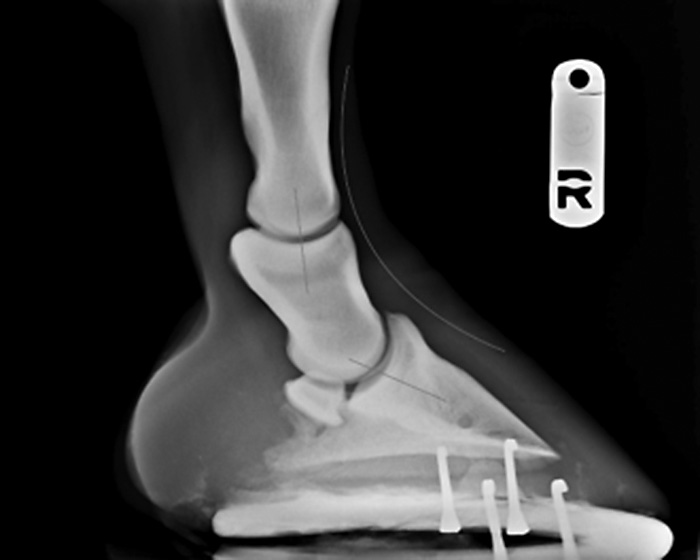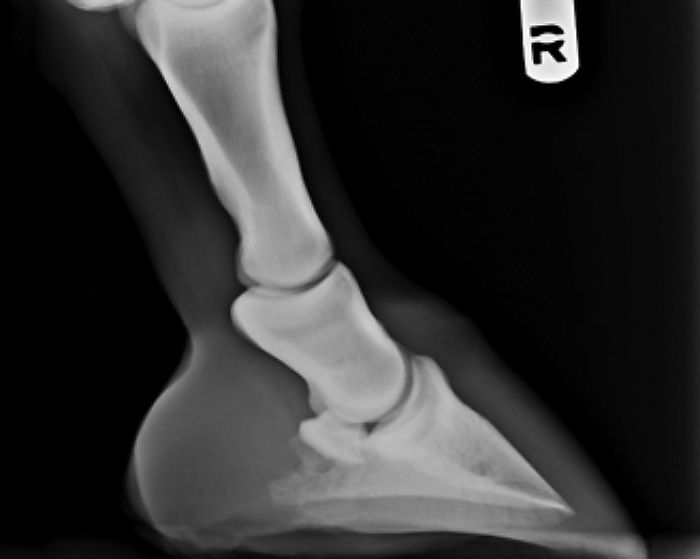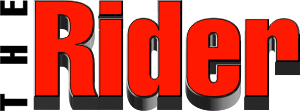Recent research focuses on muscle recruitment and the impact foot balance, training programs and footing on injury prevention in our equine athletes.
By Dr. Bri Henderson.
Why does balance matter? A question many of us have ironically laughed about if we stumble and fall but one that we often fail to examine when it comes to our horses. There are countless research papers, blogs and articles discussing the benefits of cross training, training gear and the impact of muscle and training imbalances on injury rates amongst athletes. The equine world is catching up with recent research focusing on muscle recruitment and the impact foot balance, training programs and footing on injury prevention in our equine athletes. But what does this mean to our daily life?
I have been blessed to grow up in a “horsey family” and through my parents was exposed to multiple disciplines, breeds and training concepts. We would frequently have a horse compete in 3rd level dressage one weekend and then complete a 50 mile endurance ride the next. This is cross-training on steroids, but it taught me a great deal about how the different disciplines can not only co-exist but actually work synergistically to produce a strong and healthy athlete. Fast forward through many years of school and riding around the world and that belief is firmly rooted in the heart of my veterinary practice and the way I develop horses.
 No feet, no horse.
No feet, no horse.
Multiple studies have linked poor foot balance with chronic lameness issues. For example, the long toe/low heel imbalance has been directly associated with increased stress on the suspensory ligament leading to proximal suspensory inflammation and suspensory ligament tears. Through advanced imaging (high quality ultrasound, MRI, CT), we are able to recognize a greater number of ligament injuries associated with the coffin joint/navicular apparatus. Collateral ligament injuries have been associated with torque on the lower limb. This injury appears to be on the rise with the increased popularity of advanced fibre footing. In a 2002 study, 41% of horses with collateral ligament injuries had significant foot imbalance, in comparison to 90% of horses with navicular pain. While soft tissue injuries are often multi-factorial, these injuries can be exacerbated by poor hoof balance and a lack of cross training. Competitive runners understand this when they experience plantar fasciitis or knee pain from tightened IT bands. Physiotherapists are quick to recommend strengthening exercises, myofascial work and to run barefoot on varied ground surfaces instead of pounding away on asphalt. Interestingly, the rehab period for these horses is often very similar!
Photos Above And Below: These x-rays are of the right front foot of a chronic lameness case. Note the broken back angle of the x-ray on the left (the “pre” x-ray) compared to the improved alignment in the x-ray on the right (the post x-ray). These x-rays are examples of pre- and post-trim. Pre-trim this horse was 2/5 lame in the RF (noticeable every step on both circles). After changing the mechanic but balancing her foot she immediately improved to a 1/5 lameness (intermittent or more noticeable on one circle). The remaining lameness was solved by additional farrier work and rehabilitating a soft tissue injury. The importance of a balanced trim can be summarised simply: you wouldn’t build your home on a unlevel foundation, why would you jump your horse on an unlevel foot? Foot balance is important because without a balanced trim, soft tissue (tendons/ligaments) and bone are forced to withstand pressure that they were never designed to stand up to. Over time, this results in inflammation which unchecked progresses to injury.
 Impact of Different Footing
Impact of Different Footing
As a self acknowledged dressage queen, there are few things more enjoyable then schooling in a freshly groomed sand ring. Dressage horses are predominantly trained on artificial surfaces with a high degree of cushion, providing a consistency in the training surface not paralleled in other equestrian sports…. But is what’s good for one sport good for all? Not likely. Western performance horses require a deeper footing then jumpers and dressage horses. The majority of footing studies have been conducted for the racing industry as the maximum speed and force created in the limbs of these horses can have catastrophic effects if asked to work on inappropriate footing.
There is a moment of shock with the ground when the foot strikes as the forces travelling through the limb and body of the horse change momentum. These phases are described as: Impact – Stance – Breakover. Injury is typically an acute or over-load (a slip/fall or twist) which results in a torn tendon or broken bone OR as a repetitive strain injury where there is damage quietly accumulating until the structure is weakened and becomes injured with no apparent trauma or event. Simply stated, the harder the surface the greater the force transferred up the limb; the softer the surface the more slide. The key is to find the right balance as harder surfaces often result in a greater risk of bony injury (i.e. condylar fractures in race horses) whereas softer surfaces are more likely to result in soft tissue injury (i.e. ‘bowed’ tendon). The complexity comes when we start to look at all the factors (level of fitness, age of horse, footing, training management, foot balance).
Footing is one piece of a large puzzle but it is one that the average rider has the least control over. So how do you reduce your horses’ risk of injury? There is a strong link between a sudden change in riding surface and injury. Horses’ that train on only one type of footing are more likely to suffer an injury if they then compete maximally on a different surface. While there is some debate on this topic, there is a large contingent of scientists, riders and trainers world wide that believe horses should work on different surfaces. The ability to strengthen stabilizing muscles and prevent or reduce the accumulation of damage within soft tissue/bone is so important to improving a horses’ longevity in sport. What does this look like in your daily training schedule? Typically I encourage clients to hack their horses 1-2 times per week. Walking on trails/fields and up and down hills has enormous benefits to core/back strength, limb strength and the general happiness of horses and riders. For our elite competitors, a 1 mile gentle grade gallop can provide the high intensity session to give your horse a cardiovascular boost that will pay off in the jump off or on cross country! Alternatively, our endurance horses should cross train with dressage or basic ring work to improve top line strength and suppleness for technical trail and to reduce the risk of injury secondary to muscle fatigue.
Horse-Rider Interaction/Top Training Exercises
Another significant area of research in the last 15 years has been the evaluation of core/back strength of the horse and the impact of rider fitness and dynamic saddle fit on the athlete. Until recently, the back has never truly been recognized as a cause of poor performance and lameness. Dr. Hilary Clayton created the infamous “carrot stretches” as a way to improve back and core strength in horses, in addition to demonstrating the impact of a strong core on the quality of a horses’ gait. These ‘dynamic back exercises’ enable us to strengthen not only the long back muscles but also the small stabilizing muscles to reduce/prevent back pain. Further research has been published on the impact of poor rider balance and poor saddle fit on creating back pain in horses. A study published in the International Journal of Performance Analysis in Sport (Hampson and Randle) evaluated left to right pressure differences on the back of dressage horse and rider pairs. After initial analysis the riders were sent home for 8 weeks with a 3x per week (20 minute) sport specific core strength program. When pre- and post- pressure differences were compared, all riders showed a more balanced seat which resulted in an increased stride length in their horses! The final component is saddle fit and an understanding that both horse and rider are always changing and so saddle fit should be assessed 1-2x per year (or more often in rehab cases that are dramatically improving their top line). Focal pressure from an ill-fitting saddle can impede the horse from truly engaging their core. Over time this can prevent correct muscle development, create back pain and ultimately limit the quality of gait. We are blessed to have some truly talented saddle masters in Ontario that are not sales-people for a specific brand of saddle. Their knowledge and craftsmanship can be an incredible asset to any horse and rider combination.
So what are my favourite exercises for crossing training? I have already mentioned hacking out and Dr. Hilary Clayton’s Dynamic Back exercises which form the foundation for most of our advanced rehabilitation programs (once the injury is healed and we have moved on to strengthening). Once a week our horses work in hand both lunging in side reins and doing basic lateral work (side pass/leg yield, shoulder-in and backing up in hand). The sessions last only 20 minutes and can incorporate ground poles/low cavaletti to aid in strengthening and building greater elasticity in the gait. The goal of this session is to warm/lengthen and stretch the muscles as well as quietly work the grey matter of the horse. The horse should never be stressed after this (or any session). If we assume that most horses work 4-6 days per week (1 day in hand, 1-2 days hacking) then remaining working sessions of the week should comprise sport specific training to build the strength and fitness for their sport.
~The horse must perform from joy, not subservience. Praising a horse frequently With voice, a gentle pat, or relaxing the reins is very important to keep the horse Interested and willing.~ Klaus Balkenhol


